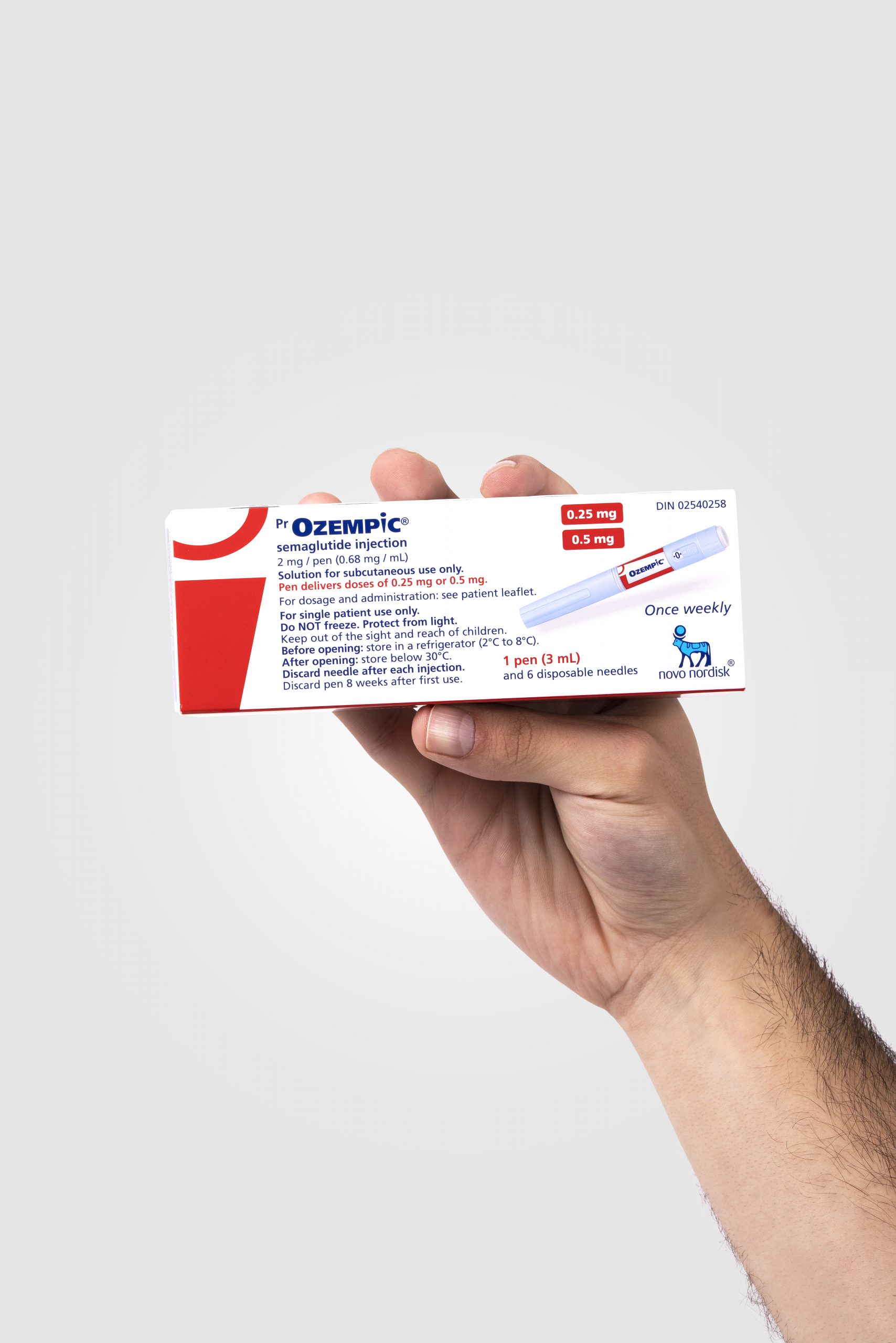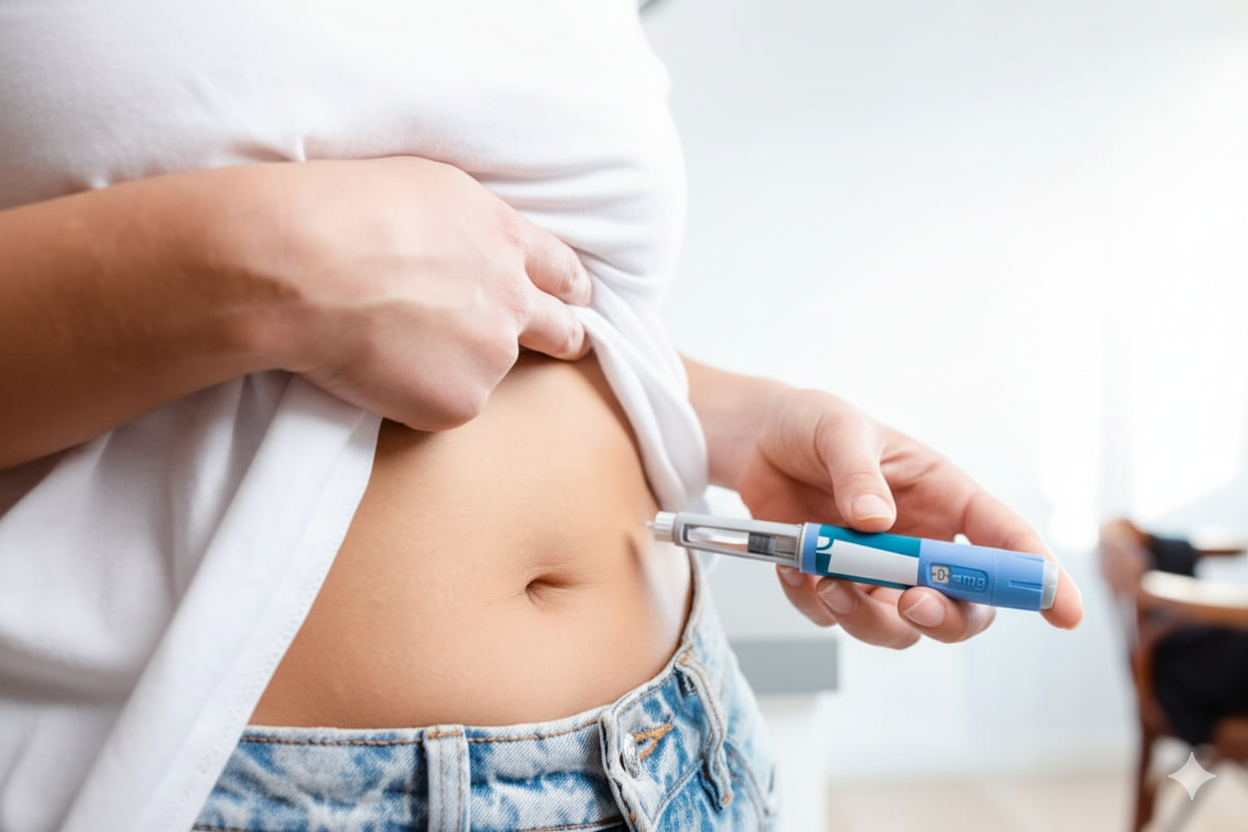Introduction: Why Weight Loss Injections Are Changing the Game
Across Canada, more adults than ever are exploring medical treatments to support weight management. While healthy eating and regular exercise remain foundational, new prescription weight loss injections, including GLP-1 receptor agonists such as semaglutide and tirzepatide, are helping Canadians lose weight safely and sustainably under professional supervision.
This guide explains how weight loss injections work, how to use them properly, where to inject them, and what to expect during treatment. We’ll also cover storage and safety, and review which options are currently approved in Canada.
If you’re wondering whether injections like Ozempic®, Wegovy®, or Mounjaro® might be right for you, this article will help you make an informed, confident decision.
How Do Weight Loss Injections Work in the Body?
Most modern prescription weight loss injections in Canada belong to a class of medications known as GLP-1 receptor agonists. GLP-1 stands for glucagon-like peptide-1, a hormone your body naturally produces after eating.
Weight loss injections mimic that hormone to:
- Reduce appetite by signaling fullness to the brain.
- Slow stomach emptying, so you feel satisfied for longer after meals.
- Improve blood-sugar control, reducing cravings and energy crashes.
- Support gradual, consistent weight loss by helping you eat fewer calories without extreme hunger.
Some newer medications, like Mounjaro® and Zepbound®, also activate another hormone receptor called GIP, enhancing metabolic benefits even further.
When combined with a balanced diet and physical activity, these medications can help individuals lose 10–20 % of body weight on average, depending on the specific drug and dose.
Common Weight Loss Injection Options in Canada
There are several prescription weight loss injection options available to Canadians through healthcare providers. Each has slightly different approvals and intended uses.
| Medication | Generic Name | How It Works | Frequency | Health Canada Approved Use | Average Weight Loss |
| Wegovy® | Semaglutide | GLP-1 receptor agonist | Weekly | Chronic weight management | 10–15% of body weight |
| Ozempic® | Semaglutide | GLP-1 receptor agonist | Weekly | Type 2 diabetes (may be prescribed off-label for weight loss) | 10–15% (weight loss benefit) |
| Mounjaro® | Tirzepatide | Dual GIP + GLP-1 receptor agonist | Weekly | Type 2 diabetes (used off-label for weight loss) | Up to 20% in trials |
| Zepbound® | Tirzepatide | Dual GIP + GLP-1 receptor agonist | Weekly | Chronic weight management (approved by Health Canada in 2024) | Around 20% at higher doses |
How to Properly Use Weight Loss Injections
Here’s how to properly use weight loss injections with step-by-step guidelines to help you. Starting your first injection can feel intimidating, but the process is straightforward once you know what to expect.
1. Prepare Your Injection
- Wash your hands with soap and water.
- Remove the pen cap and check that the medication is clear, colourless, and free of particles.
- Attach a new needle each time (single-use only).
- Prime the pen if it’s your first use or as directed.
2. Choose Your Injection Site
Next, choose your injection site. The most common and recommended injection sites are the:
- Abdomen: Make sure you are at least 2 inches away from your belly button.
- Thighs: Inject the medication on the front of the upper thigh.
- Upper arm: Aim for the outer area of the upper arm, if administered by another person.
Rotate your injection site each week to prevent irritation or scar tissue.
3. Inject Correctly
After, prepare to inject the pen correctly by following these steps:
- Hold the pen firmly against your skin.
- Press and hold the injection button until the dose counter reads “0.”
- Keep the pen in place for a few seconds (usually 5 to 10 seconds) to ensure the full dose is delivered.
- Remove and dispose of the needle safely in a sharps container.
Do Weight Loss Injections Hurt?
Weight loss injections use very small needles and usually cause minimal discomfort. Most people describe a weight loss injection as relatively painless and say it feels like a quick pinch.
How to Store and Handle Weight Loss Injections
Proper storage is essential for maintaining weight loss medication’s effectiveness. Here’s how to store weight loss injections:
- Keep refrigerated between 2 °C and 8 °C (36 °F–46 °F).
- Do not freeze or expose to direct sunlight.
- Always keep pens capped and away from children and pets.
If you’re traveling, store your pen in an insulated cooler bag with a cold pack and avoid leaving it in a hot car.
Safety Tips and Precautions
Weight loss injections are prescription treatments and should be started only under medical supervision. Key safety tips and precautions include but are not limited to the following:
- Eligibility: According to Obesity Canada, Most patients qualify if their BMI is 30 or higher, or 27 with weight-related conditions (such as hypertension or Type 2 diabetes).
- Do not use: Avoid use if you have a personal or family history of medullary thyroid carcinoma or multiple endocrine neoplasia syndrome type 2 (MEN 2).
- Common side effects: Common side effects may include nausea, mild stomach discomfort, diarrhea, constipation, or decreased appetite. These usually improve after the first few weeks.
- Serious side effects: Rare, but may include pancreatitis or gallbladder problems. Seek medical attention if you experience severe abdominal pain.
Who Should Not Take Weight Loss Injections
Weight loss injections may not be right for everyone. Avoid these injections or use with caution if you:
- Are pregnant or breastfeeding.
- Have a history of severe gastrointestinal disease or pancreatitis.
- Have uncontrolled thyroid disease.
- Take medications that strongly affect blood sugar without medical supervision.
Interested in learning if weight loss injections can help you lose weight? Get in touch with us online today to speak to a healthcare provider.
Your Rocky Health clinician will review your health history and current medications before prescribing to ensure safety.
When Can You Expect Results From Weight Loss Injections?
Most people begin to notice appetite changes within the first few weeks, though measurable weight loss often appears around 1–2 months.
Clinical studies show the following:
- At 3 months: There’s a noticeable reduction in cravings and improved portion control.
- At 6 months: On average 8–12 % weight loss.
- At 12 months: Potential 15–20 % loss, depending on medication and adherence.
Consistency is crucial, missing doses or stopping treatment early can delay or reverse progress. Additionally, be sure to learn more about what to expect for your first 90 days on weight loss medication.
Tips for Sustained Weight Loss Success
Here are a few tips you can use alongside your weight loss medication to help you stay on track for lasting results:
- Pair medication with lifestyle changes. Balanced nutrition and physical activity boosts results and helps maintain long-term success.
- Stay hydrated. GLP-1 medications can suppress thirst as well as appetite.
- Eat smaller, slower meals. This minimizes nausea and maximizes fullness.
- Follow up regularly. Ongoing virtual check-ins through Rocky Health allow your clinician to adjust dosing and track progress safely.
Alternatives if You Don’t Want to Use Weight Loss Injections
If weight loss injections aren’t the right fit or you just don’t like the idea of needles, other evidence-based options may be available:
- Oral medications: Some GLP-1-based drugs are now available in tablet form (e.g., Rybelsus®).
- Lifestyle programs: Structured nutrition and exercise support can complement or replace medication.
- Behavioral therapy: This can help address emotional eating and stress triggers.
Discuss these with your clinician to find the most comfortable and effective path for your goals.
Frequently Asked Questions About Weight Loss Injections
Does a Weight Loss Injection Cause Pain?
Usually not. The needle is very thin, and most patients describe only mild pressure or a quick pinch.
Can I Inject it Anywhere?
Stick to recommended areas (abdomen, thigh, upper arm) and rotate weekly to avoid irritation.
Do I Need to Check My Blood Sugar Beforehand?
If you have diabetes or take glucose-lowering medications, your healthcare provider may ask you to monitor occasionally. Otherwise, routine checks aren’t required.
Are Results Permanent?
Stopping medication may lead to partial weight regain over time. However, continued healthy lifestyle habits are key to mitigate this.
Conclusion: Use Weight Loss Injections Safely & Effectively for Best Results
Weight loss injections have reshaped how Canadians manage obesity and metabolic health. By regulating appetite, improving insulin sensitivity, and promoting steady progress, GLP-1-based medications like Wegovy®, Ozempic®, and Mounjaro® offer powerful, medically backed results.
However, success depends on proper use, consistent dosing, and professional guidance. If you’re considering this option, Rocky Health’s licensed clinicians can help determine whether you qualify and guide you through every step—from your first dose to long-term maintenance.

Ready to Take the Next Step?
Start your online weight loss assessment with a licensed healthcare provider at Rocky Health today. Learn about your eligibility by completing an assessment.
References
- Canadian Medical Association Journal (CMAJ). “Clinical Effectiveness of GLP-1 Receptor Agonists in Obesity Management.” 2023.
- Health Canada. GLP-1 Receptor Agonists: Product Information. (n.d.). Retrieved from https://www.canada.ca/en/health-canada.html.
- Healthline. “Proper Ways to Store the Medication Semaglutide.”
- Obesity Canada. “Management of Obesity.”
Disclaimer: This article is intended for informational purposes only and is not a substitute for professional medical advice, diagnosis, or treatment. Always consult your healthcare provider with any questions about a medical condition or treatment.
Editorial Standards: At Rocky Health, we’ve made it our mission to support men and women with trustworthy, easy-to-understand medical and health information online. Read more about our editorial standards here.





